Ginataang halo-halo is rich, creamy, and loaded with coconut flavor. Made of glutinous rice balls, sago, tropical fruits, and tubers, it makes a delicious and filling snack, dessert, or breakfast!
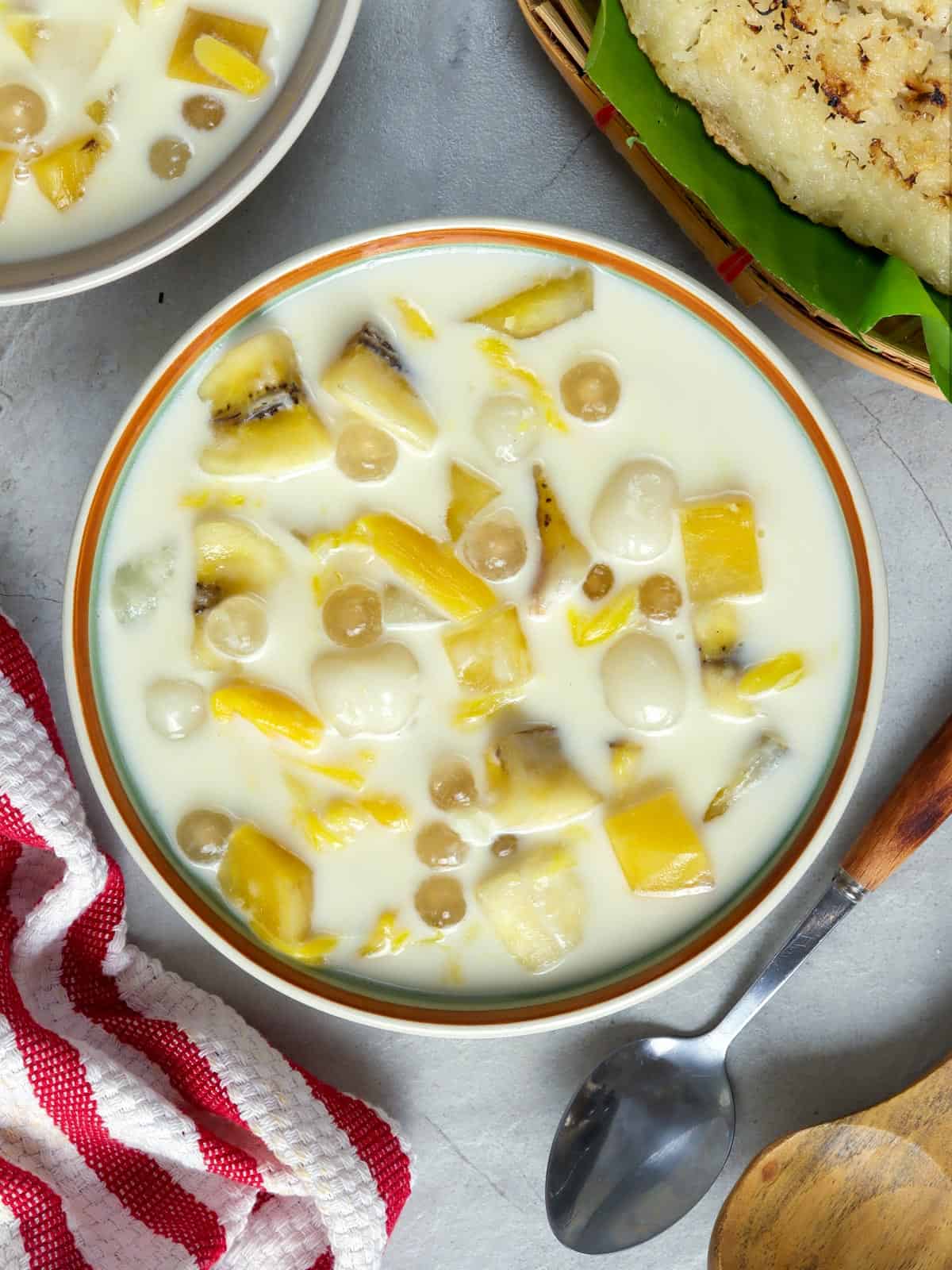
What is Ginataang Halo-Halo
Ginataang halo-halo is a popular Filipino delicacy made of sticky rice balls stewed in coconut milk. It's widely enjoyed as a snack, dessert, or breakfast throughout the year and a staple dish during the Lenten season when Catholics tend to fast and abstain from eating meat.
Along with some variations in ingredients, the dish's name may also differ from one area of the country to the next. I am a Kapampangan, and we call it sampelot, but it's also known as binignit, alfajor, linugaw, ginataang bilo-bilo, ginatan, kamio, kiniler or tambo-tambong.
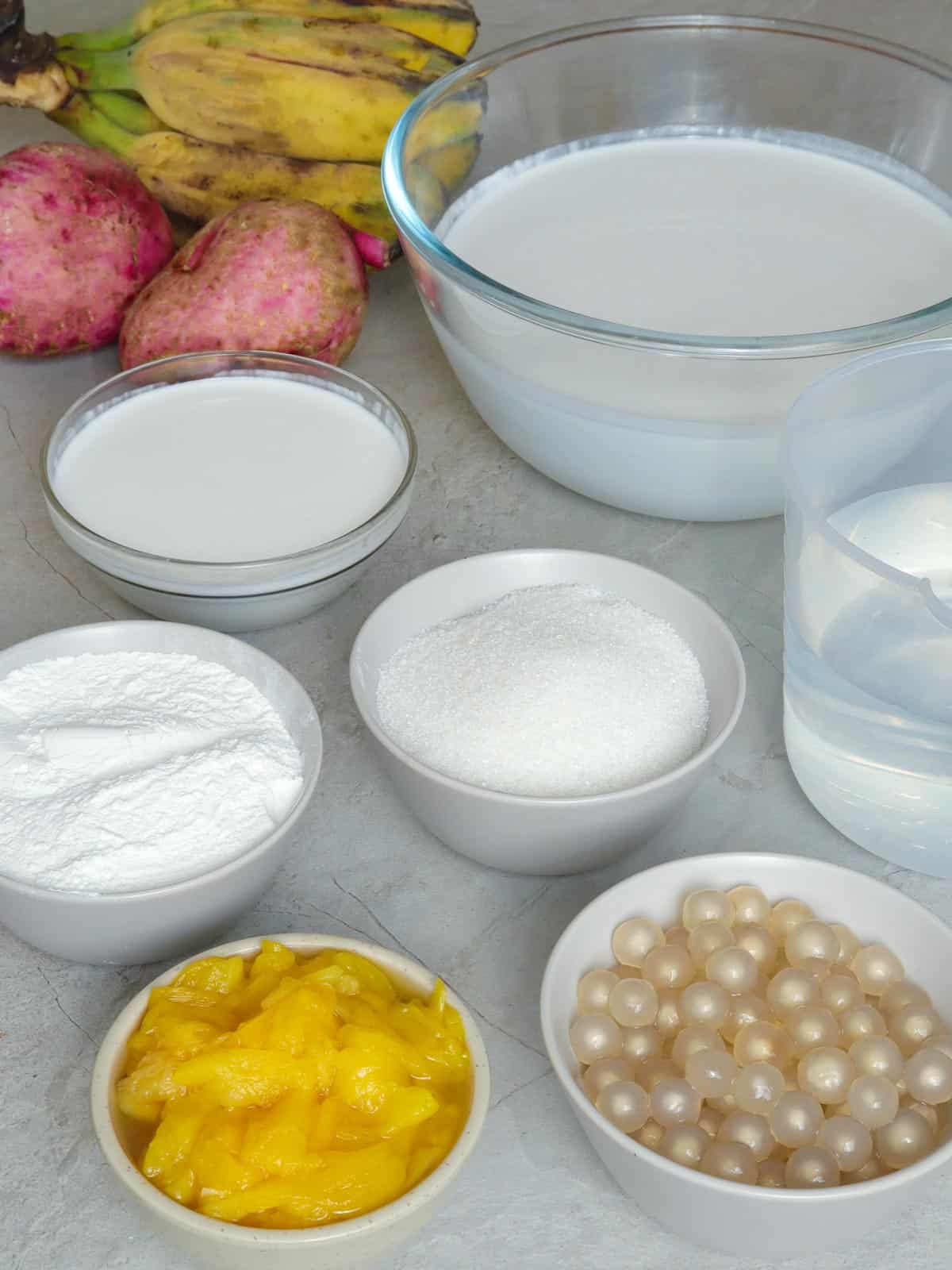
What you'll need
This ginataan is a "halo-halo" (mix) of various ingredients. Along with coconut milk and glutinous rice balls called bilo-bilo, the sweet stew may also include sago pearls, tropical fruits such as jackfruit and saba bananas, and root crops such as kamote (local yam), ube (purple yam), and taro (gabi).
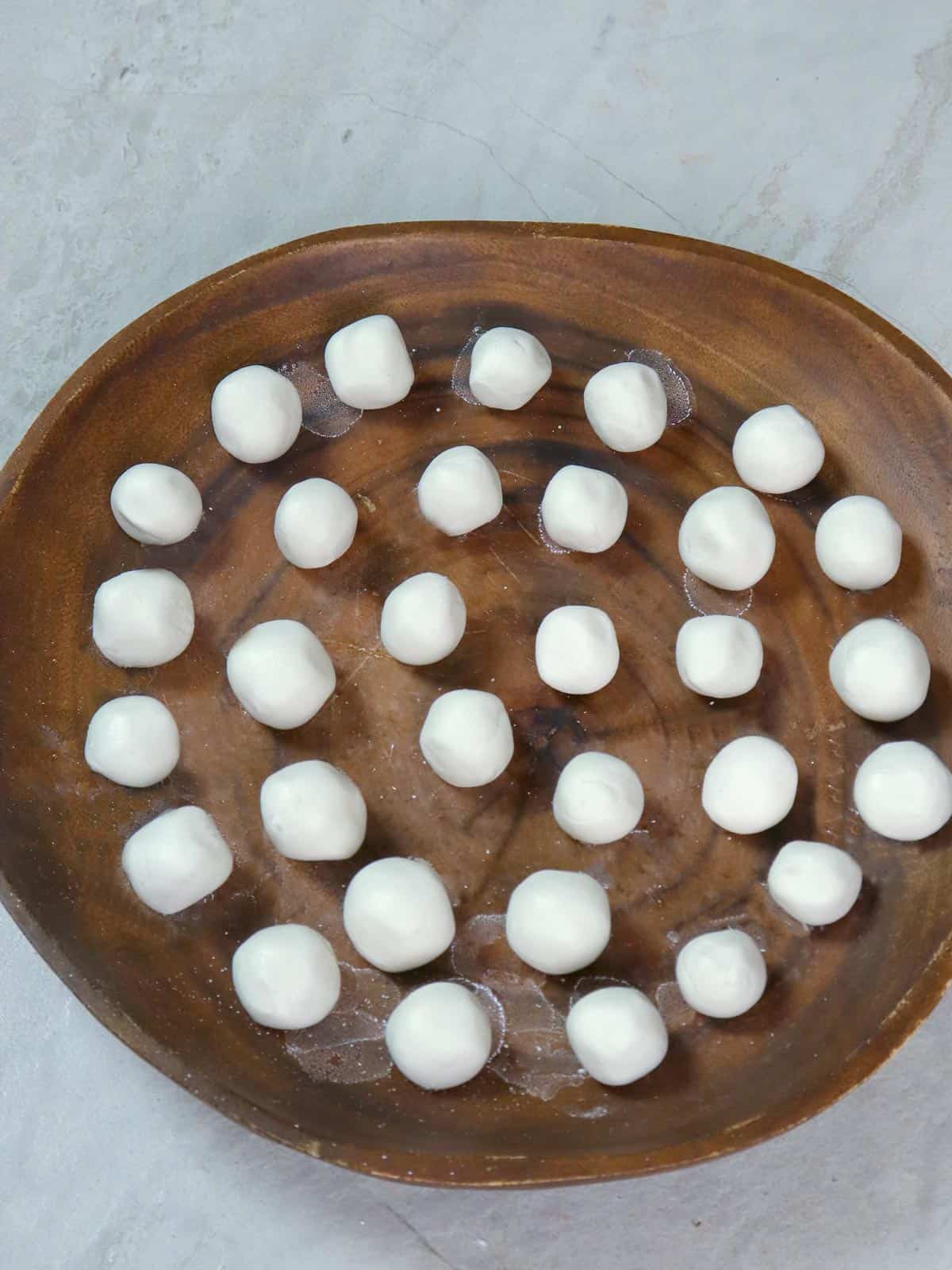
Making the sticky rice balls
- Combine glutinous rice flour and water into a pliable dough. If the dough is too sticky, add more flour; if too crumbly, add more water.
- To make the sticky rice balls ahead of time, arrange in a single layer on a baking sheet or shallow plate, cover them with plastic film to keep from drying out, and refrigerate them until ready to use.
- To store indefinitely, arrange the balls in a single layer on a baking sheet, cover with plastic film, and freeze them until firm. Transfer to resealable bags or airtight containers when hard and keep in the freezer.
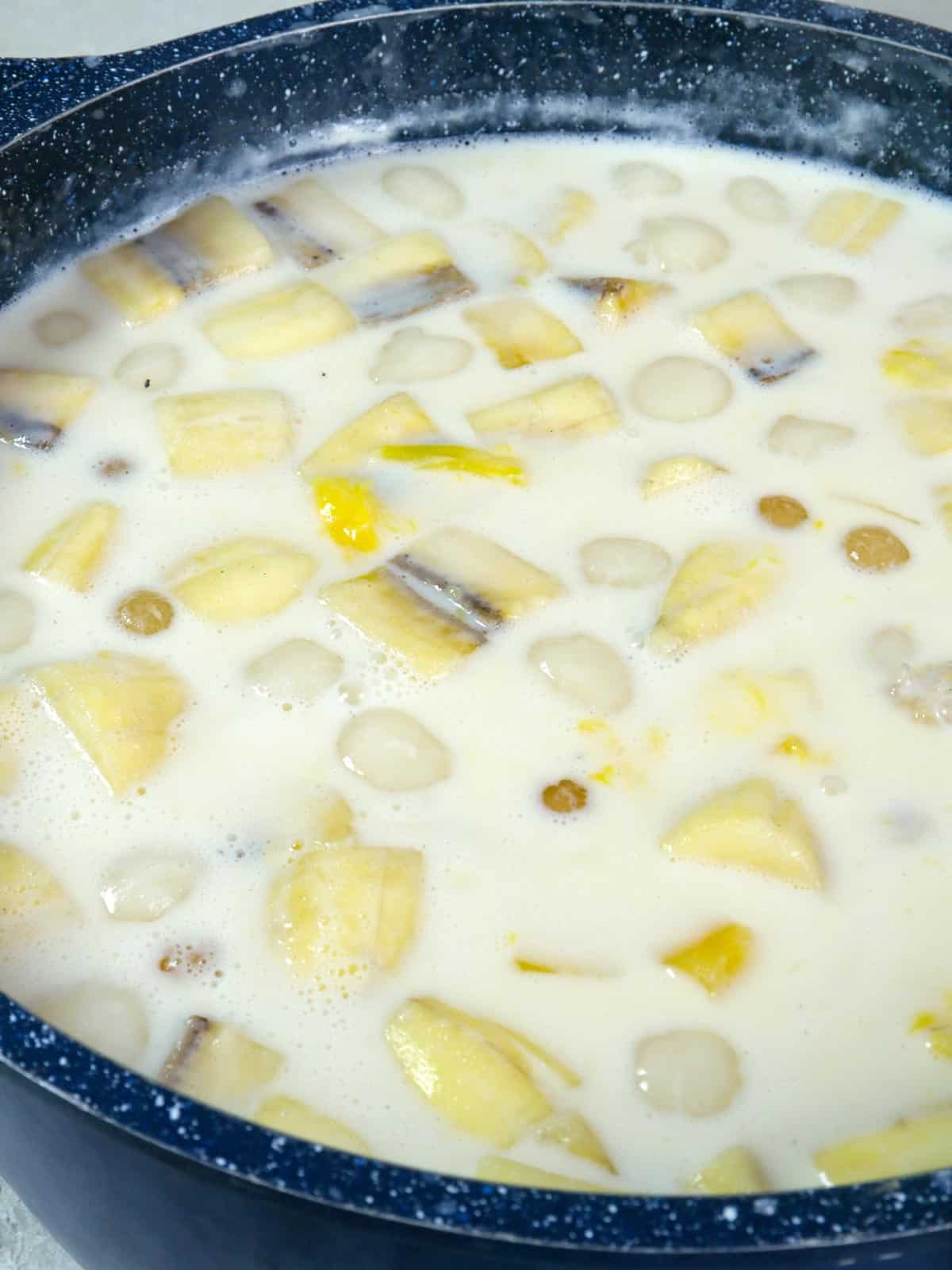
Cooking tips
- Cut the bananas and tubers into uniform sizes to ensure even cooking.
- You can find cooked sago sold at wet markets or in supermarkets. If you prefer, you can buy and cook the dry pearls yourself.
- If using canned or bottled jackfruit instead of fresh, make sure to drain well, as they're usually packed in heavy syrup.
- Add a few drops of ube or langka extract to half the bilo-bilo dough for a color and flavor boost.
- Cook the coconut milk at a gentle simmer, and do not boil lest it curdles or separates.
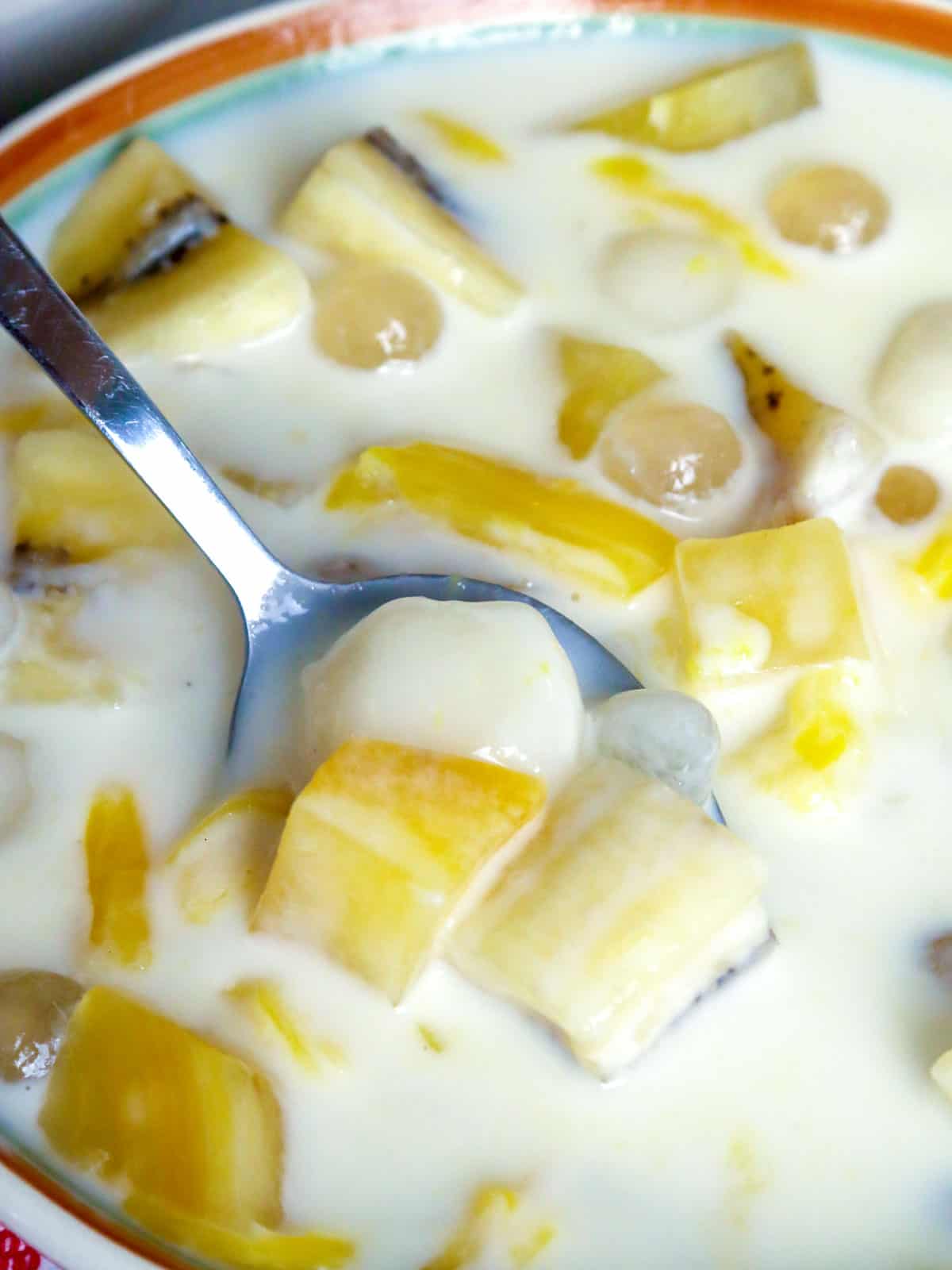
How to serve and store
- Ginataang halo-halo can be enjoyed warm or cold for breakfast or after meal dessert.
- Transfer leftovers to a container with a lid and store in the refrigerator for up to 3 days. I do not recommend freezing as the bananas turn black and mushy when frozen and thawed. When frozen, the sticky rice balls also turn hard and lose their chewy texture.
- The ginatan will thicken as it cools; add a generous splash of coconut milk when reheating to loosen the consistency.
More coconut desserts
Ingredients
- 1 cup glutinous rice flour
- 2 ½ cups water
- 3 cans (13.5 ounces each) coconut milk
- 2 (about 4 cups) large camote, peeled and cubed
- 2 (about 2 cups) saba bananas, peeled and cubed
- 1 cup cooked sago
- 1 cup jackfruit strips
- 1 cup coconut cream
- 1 cup sugar
Instructions
- In a small bowl, combine glutinous rice flour and ½ cup of the water into a pliable dough. If the dough is too sticky, add more flour; if too crumbly, add more water.
- Using the palms of your hands, form dough into smooth balls the size of marbles. Arrange shaped dough balls in a single layer on a baking sheet or shallow plate and cover with a cloth until ready to use.
- In a large pot over medium heat, combine coconut milk and the remaining 2 cups water. Bring to a simmer.
- Add camote and cook for about 3 to 5 minutes or until almost tender.
- Add bananas, sago, and jackfruit and cook for about 3 to 5 minutes.
- Add glutinous rice balls and cook for about 3 to 5 minutes or until they start to float on top.
- Add sugar and stir until dissolved.
- Add coconut cream and continue to cook until bananas and camote are tender and the sauce thickens to desired consistency.
- Serve warm or cold.
Notes
- For a color and flavor boost, add a few drops of ube or langka extract to half the bilo-bilo dough.
- Cook the coconut milk at a gentle simmer, and do not boil lest it curdles or separates.
Video

Nutrition Information
“This website provides approximate nutrition information for convenience and as a courtesy only. Nutrition data is gathered primarily from the USDA Food Composition Database, whenever available, or otherwise other online calculators.”
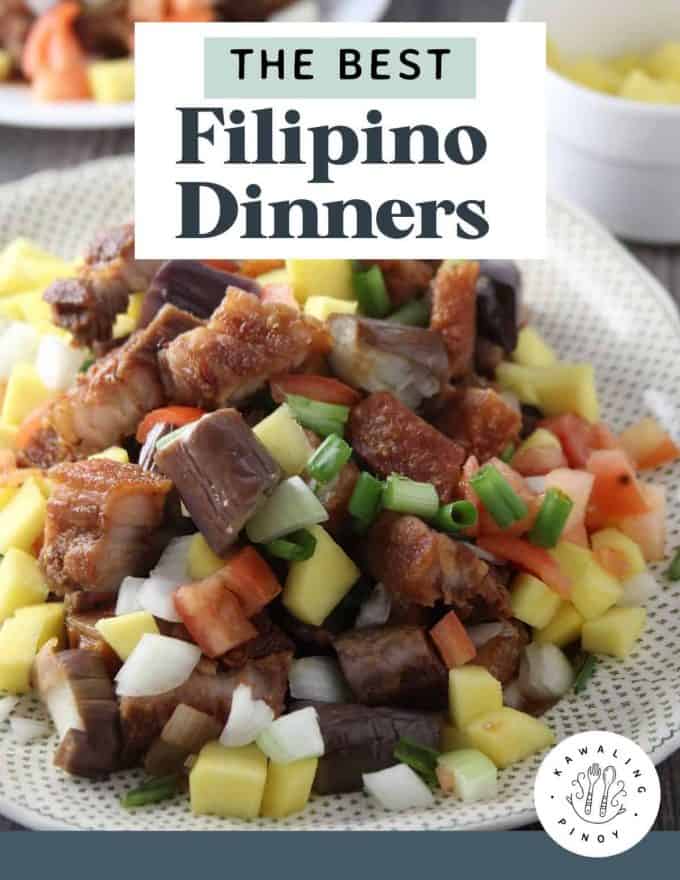
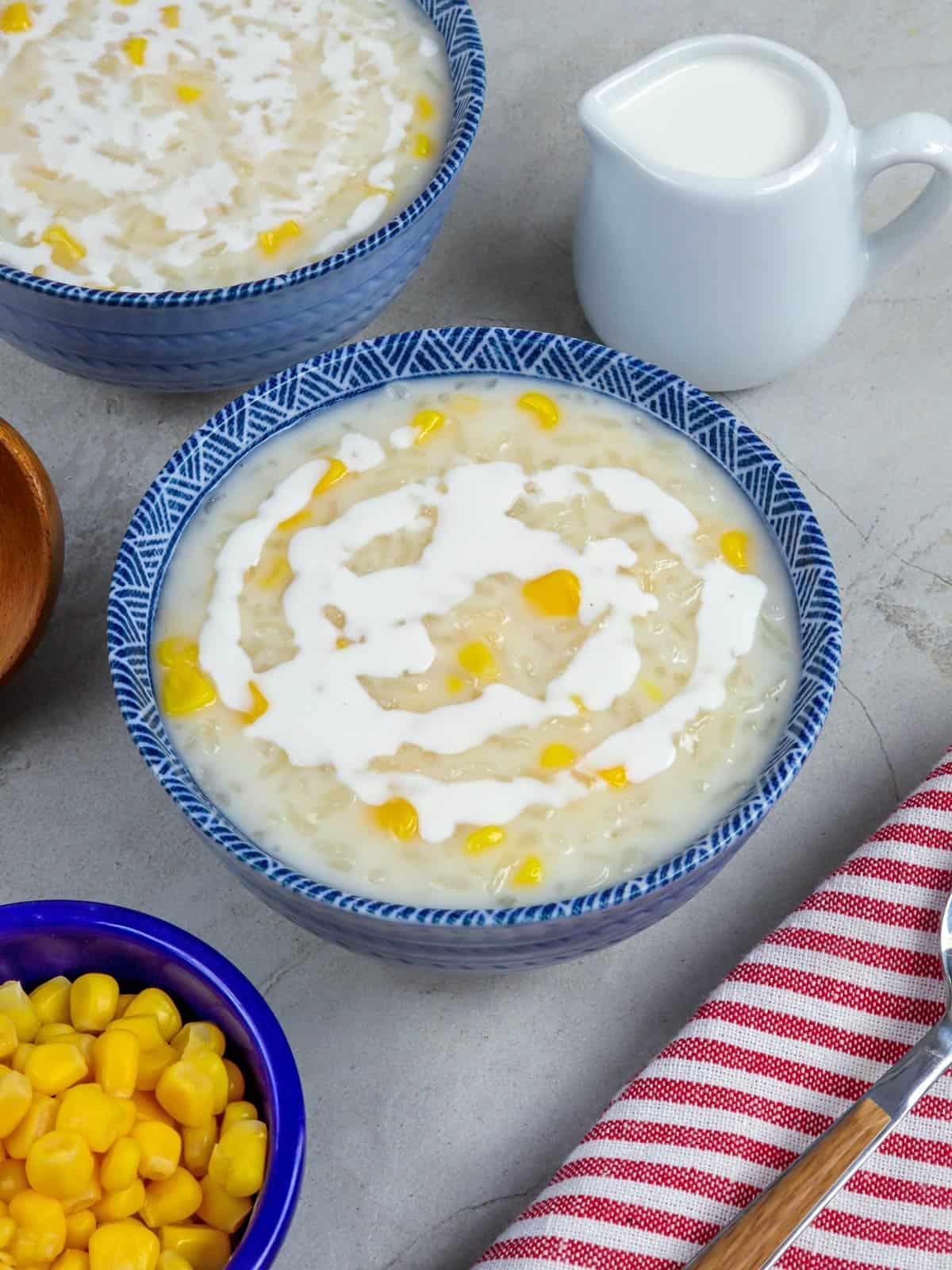
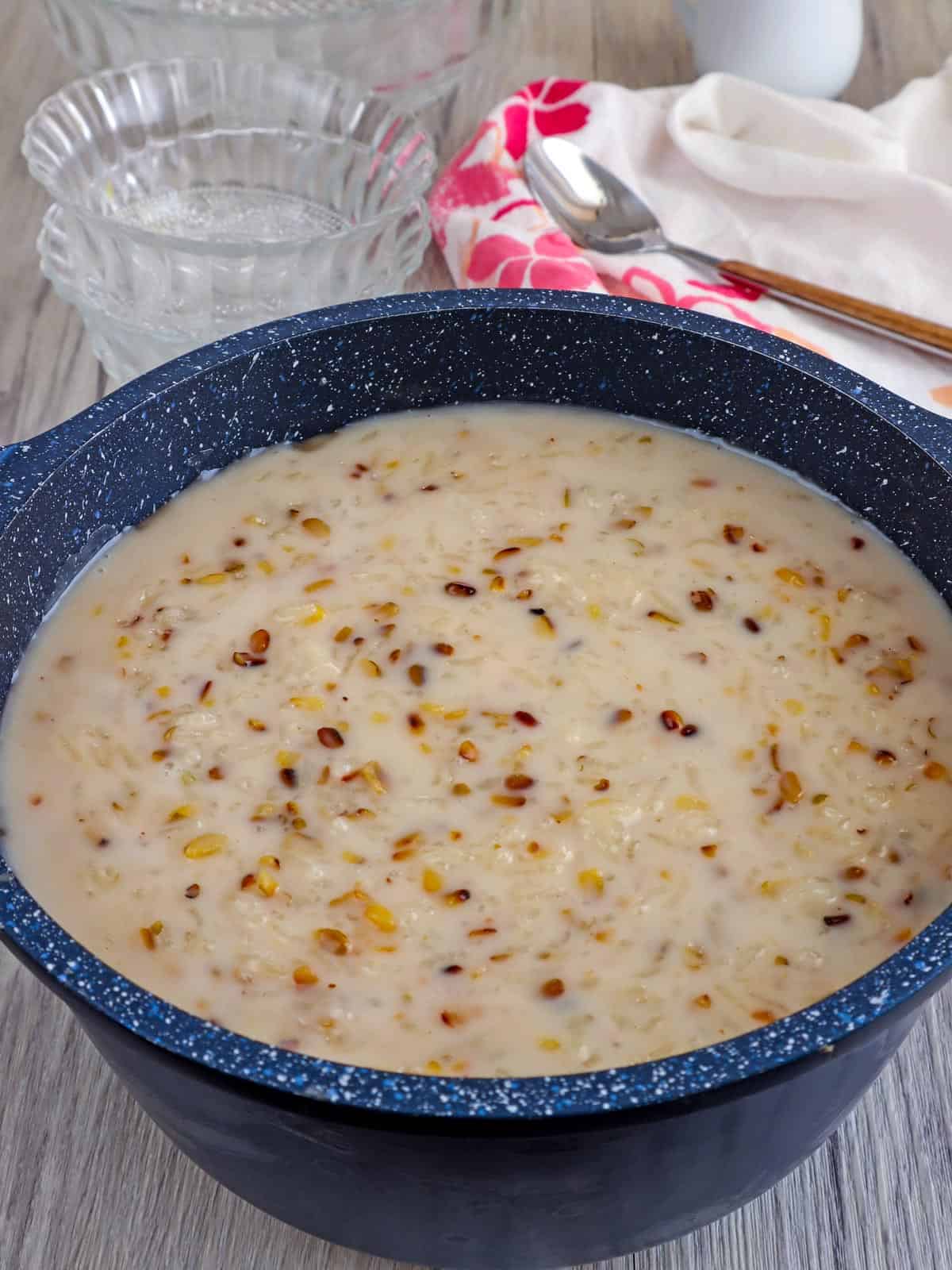
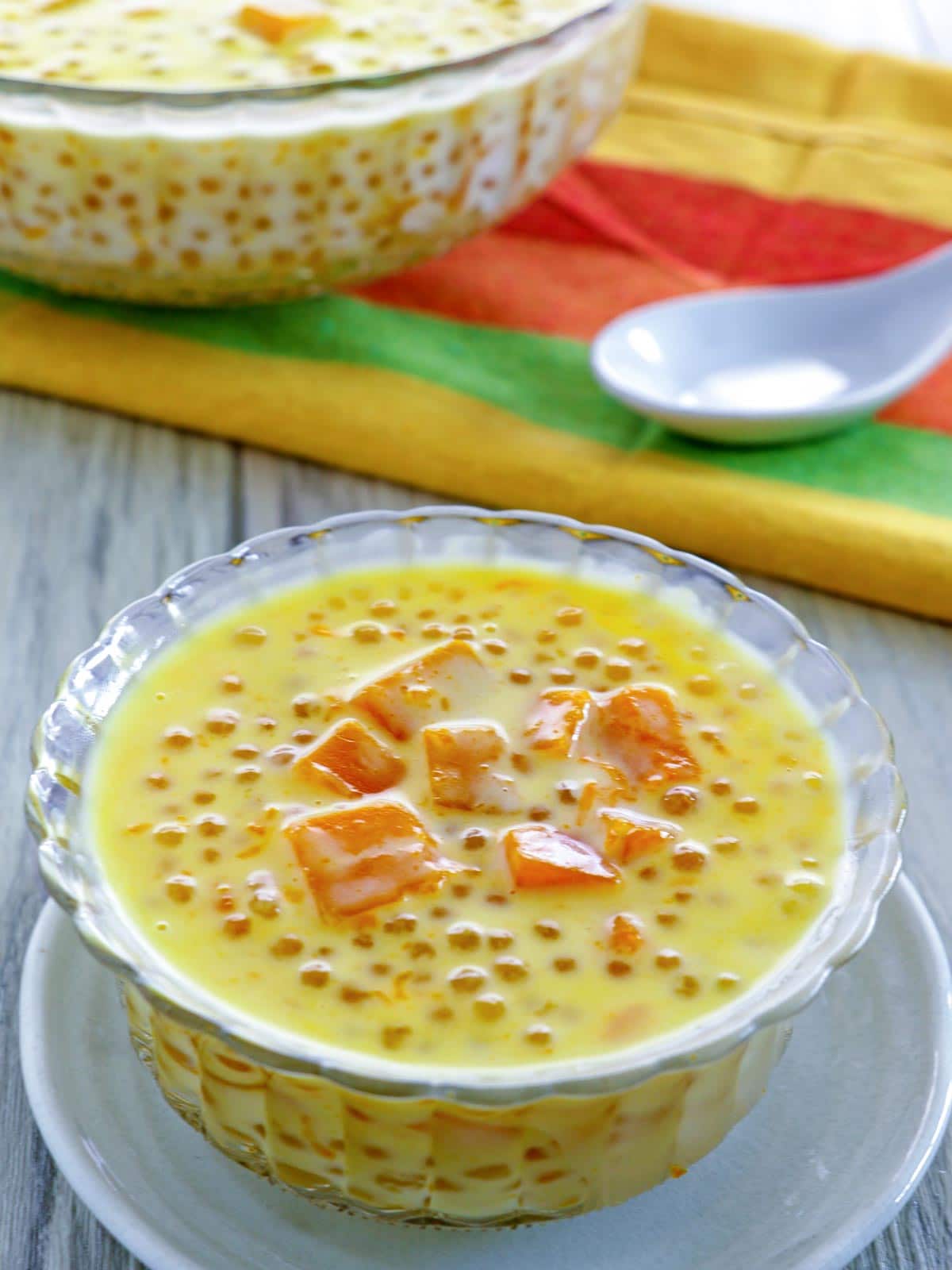
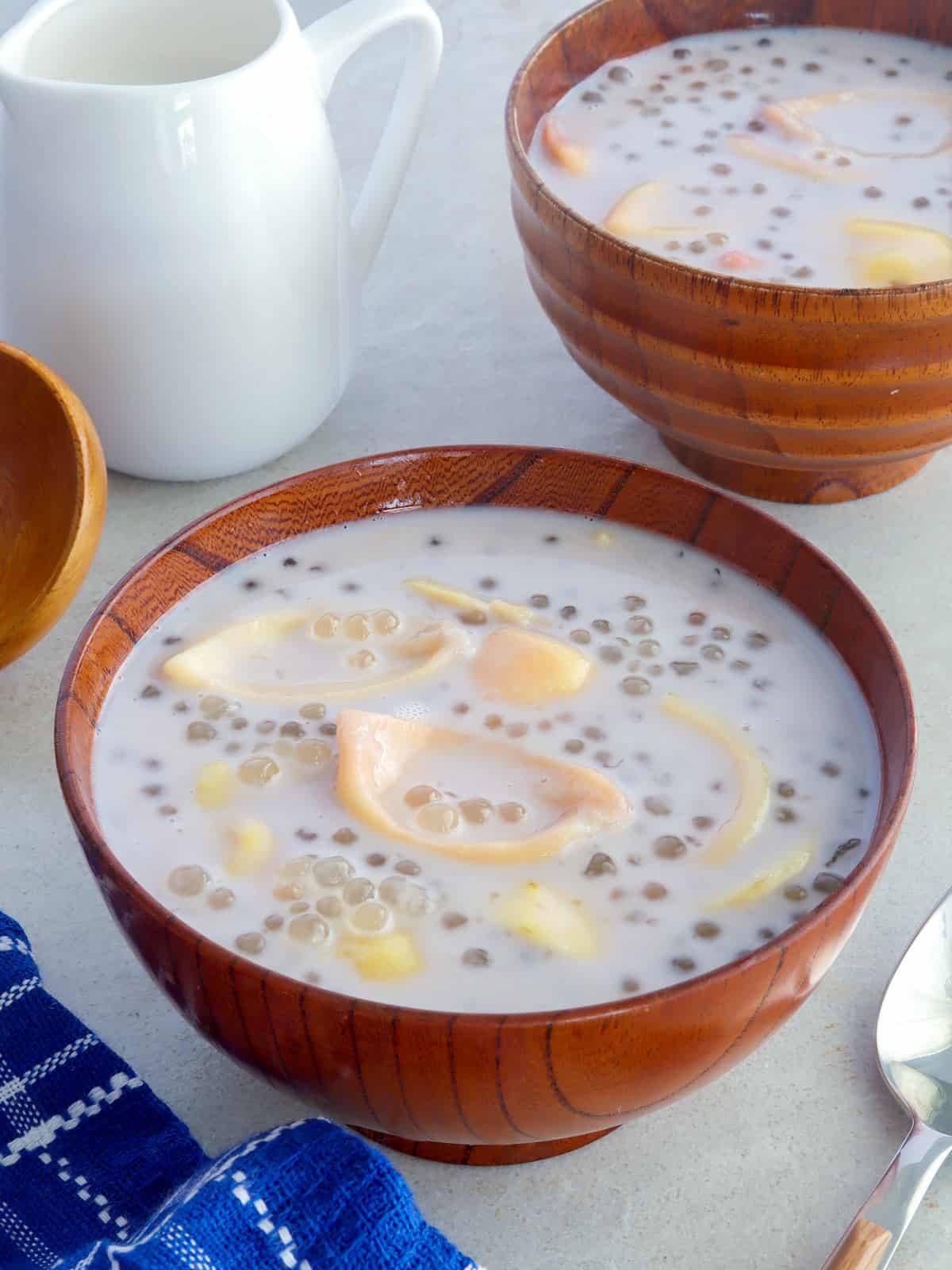
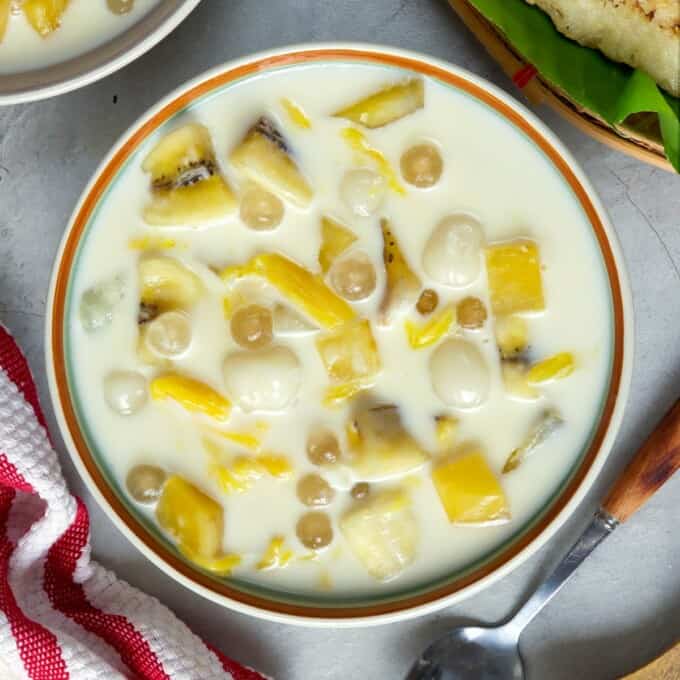
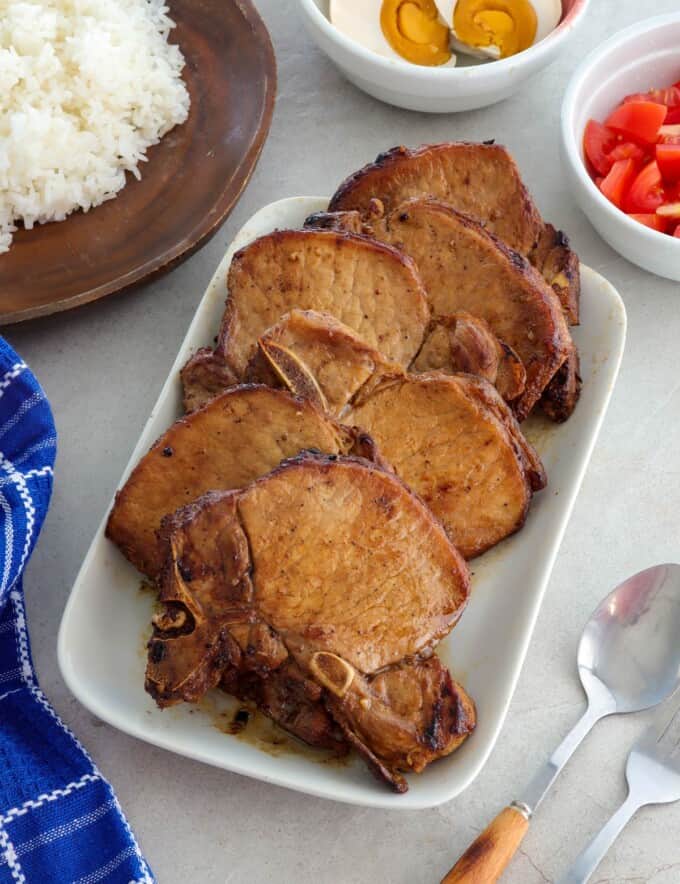
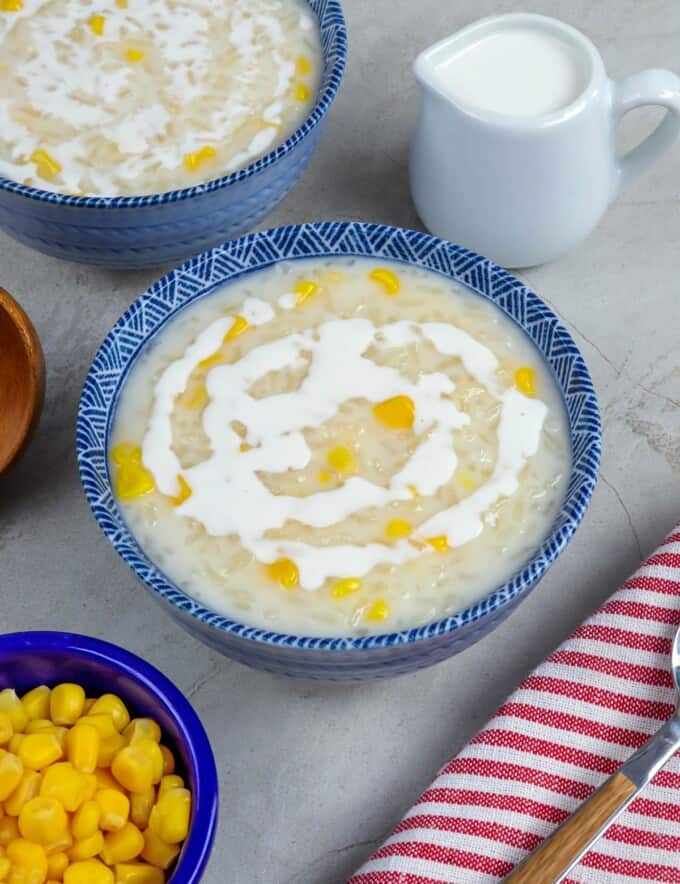
Aurora Paraiso says
Can i use milk instead o coconut milk. I am allergic to coconut milk. Thank you!
Angel Sanchez Jr says
Ang sarap ng pagkain mo. Mexicano ako.
TJ says
LOVED this although tbh, i don’t know how to make halo halo anything without ube. So mine always comes out purple from the ube root.